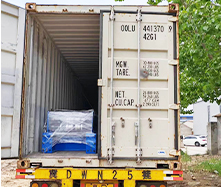standing seam curving machine
The Evolution and Importance of Standing Seam Curving Machines in Modern Construction
In recent years, the construction and architectural industries have witnessed significant advancements in technology, particularly in the manufacturing and installation of metal roofing systems. One of the most notable innovations in this field is the standing seam curving machine. This specialized equipment is designed to create curved standing seam panels that are not only aesthetically appealing but also functionally efficient, providing durability and weather resistance.
Understanding Standing Seam Roofing
Standing seam roofing has gained popularity due to its sleek appearance, long lifespan, and exceptional performance. The panels consist of two interlocking sections, which create a raised seam that stands vertically on the roof surface. This design not only enhances the visual profile of a building but also facilitates water drainage, minimizing the risk of leaks. However, a challenge arises when architects and builders aim to create visually striking structures featuring curves or unusual angles. Traditional flat panels do not accommodate such designs, necessitating the need for curving machines.
The Role of Curving Machines
Standing seam curving machines are designed to address this need by bending and curving metal panels into precise shapes, ensuring that they fit seamlessly into the architectural vision. These machines are capable of achieving various radii and angles, allowing for a diversity of design possibilities, from gently arched roofs to complex geometric patterns. The ability to customize the curvature of panels on-site not only expedites the construction process but also reduces material waste, as builders can create panels that fit perfectly, eliminating the need for time-consuming adjustments and modifications.
standing seam curving machine

Technological Advancements
Modern standing seam curving machines leverage advanced technology to enhance efficiency and precision. Many of these machines are equipped with digital controls and computer-aided design (CAD) systems, allowing operators to input specifications and generate curves with remarkable accuracy. This technology reduces the risk of human error and ensures that panels meet the specific requirements of each project. Additionally, the automation of the curving process streamlines production, enabling faster turnaround times and increased output.
Sustainability and Environmental Impact
As the construction industry moves towards more sustainable practices, standing seam curving machines play a vital role in this transition. Metal roofing is generally more sustainable than traditional materials due to its recyclability and longevity. Moreover, by providing the ability to create custom-fitted panels, these machines contribute to energy efficiency in buildings. Properly designed roofs can minimize heating and cooling costs, ultimately reducing the carbon footprint of structures.
Conclusion
In summary, standing seam curving machines represent a significant advancement in the construction and architectural landscape. Their ability to create custom-curved panels not only enhances the visual appeal of buildings but also contributes to their functional performance and sustainability. As technology continues to evolve, these machines are likely to become even more sophisticated, further pushing the boundaries of what is possible in modern architecture. By embracing innovations like standing seam curving machines, the industry can continue to meet the demands of contemporary design while prioritizing efficiency, quality, and environmental responsibility.
-
Roof Panel Machines: Buying Guide, Types, and PricingNewsJul.04, 2025
-
Purlin Machines: Types, Features, and Pricing GuideNewsJul.04, 2025
-
Metal Embossing Machines: Types, Applications, and Buying GuideNewsJul.04, 2025
-
Gutter Machines: Features, Types, and Cost BreakdownNewsJul.04, 2025
-
Cut to Length Line: Overview, Equipment, and Buying GuideNewsJul.04, 2025
-
Auto Stacker: Features, Applications, and Cost BreakdownNewsJul.04, 2025
-
Top Drywall Profile Machine Models for SaleNewsJun.05, 2025








